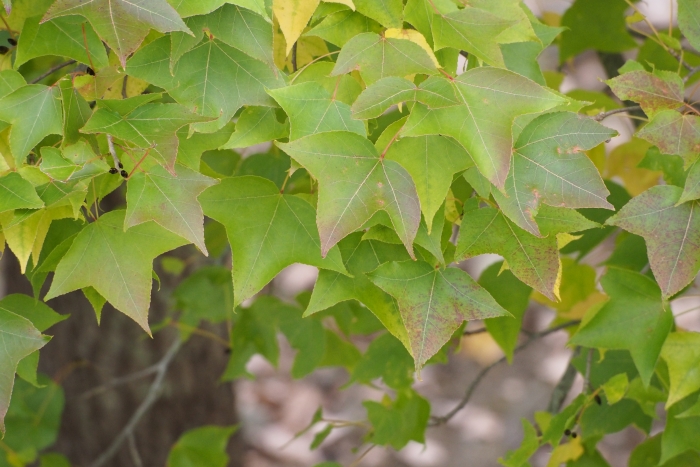Formosan Sweetgum
(Liquidambar formosana)
Formosan Sweetgum (Liquidambar formosana)
/
/

harum.koh from Kobe city, Japan
CC BY-SA 2.0
Image By:
harum.koh from Kobe city, Japan
Recorded By:
Copyright:
CC BY-SA 2.0
Copyright Notice:
Photo by: harum.koh from Kobe city, Japan | License Type: CC BY-SA 2.0 | License URL: https://creativecommons.org/licenses/by-sa/2.0 | Uploader: Josve05a | Publisher: Wikimedia Commons | Title: Chinese_Sweet_Gum_(Liquidambar_formosana)_(23193757901).jpg | Notes: {{Information |Description={{en|1=Species from eastern North America Common name: Hoary puccoon Photographed in Leatherwood Lake Park, Eureka Springs, Arkansas}} |Source={{own}} |Author=[[User:Eric in SF|Eric in S





























Estimated Native Range
Summary
Liquidambar formosana, commonly known as Formosan Sweetgum or Formosan Gum, is a deciduous tree native to a variety of habitats including mixed forests, forest margins, and limestone hills in East Asia, specifically China, Korea, Laos, Taiwan, and Vietnam. It can reach a height of 30-40 meters with a broad pyramidal to rounded canopy. The leaves are star-shaped with pointed lobes, turning a striking red to purple color in autumn. The bark is deeply furrowed, and branches may have corky projections. Flowers are inconspicuous, with separate male and female flowers on the same tree (monoecious), blooming in spring. The fruit is a spiky capsule that adds ornamental interest in the winter landscape.
Formosan Sweetgum is valued for its vibrant fall foliage and its use as a shade tree in large spaces. It is suitable for urban planting, large gardens, and parks. While it prefers moist, well-drained soils, it is adaptable to a range of soil conditions, including clay, loam, and sand, provided they are not waterlogged. It thrives in full sun to partial shade. This species is less tolerant of urban pollution than its American counterpart, Liquidambar styraciflua. Aggressive roots can cause issues with sidewalks and foundations, so it should be planted with care in urban settings.CC BY-SA 4.0
Formosan Sweetgum is valued for its vibrant fall foliage and its use as a shade tree in large spaces. It is suitable for urban planting, large gardens, and parks. While it prefers moist, well-drained soils, it is adaptable to a range of soil conditions, including clay, loam, and sand, provided they are not waterlogged. It thrives in full sun to partial shade. This species is less tolerant of urban pollution than its American counterpart, Liquidambar styraciflua. Aggressive roots can cause issues with sidewalks and foundations, so it should be planted with care in urban settings.CC BY-SA 4.0
Plant Description
- Plant Type: Tree
- Height: 40-60 feet
- Width: 25-30 feet
- Growth Rate: Moderate
- Flower Color: N/A
- Flowering Season: Spring
- Leaf Retention: Deciduous
Growth Requirements
- Sun: Full Sun, Part Shade
- Water: Medium
- Drainage: Slow, Medium, Fast
Common Uses
Bee Garden, Bird Garden, Deer Resistant, Drought Tolerant, Fragrant, Street Planting
Natural Habitat
Native to mixed forests, forest margins, and limestone hills in East Asia
Other Names
Common Names: Taiwanese Sweet Gum, Formosan-Gum, Formosan Sweet-Gum, Kinesiskt Ambraträd, 楓香, Feng Xiang Shu
Scientific Names: , Liquidambar formosana, Liquidambar formosana var. monticola, Liquidambar acerifolia, Liquidambar rosthornii, Liquidambar edentata, Liquidambar formosana subsp. monticola, Liquidambar maximowiczii, Liquidambar tonkinensis,
GBIF Accepted Name: Liquidambar formosana Hance